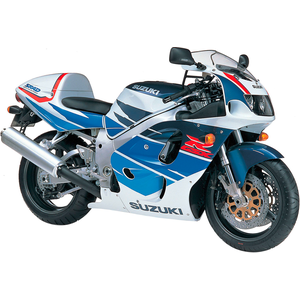Suzuki GSX-R 600 (2008-2010): A Track-Focused Legacy Revisited
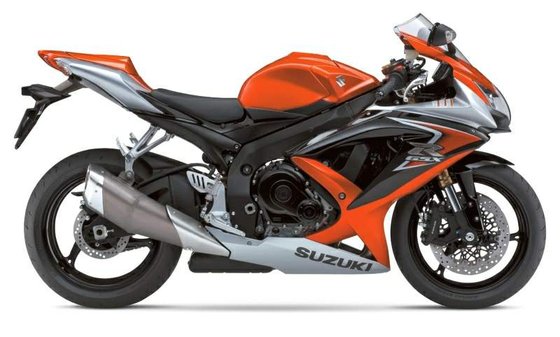
Introduction
The Suzuki GSX-R 600—often dubbed the “Gixxer” by enthusiasts—represents a pivotal chapter in the middleweight supersport saga. The 2008–2010 iteration refined Suzuki’s “Total Performance” philosophy, blending race-derived engineering with street adaptability. Having spent time with this generation, it’s clear why it remains a cult favorite: it’s a machine that rewards precision, thrives on adrenaline, and still feels relevant in today’s rider-centric market. Let’s dissect why this GSX-R continues to resonate with riders seeking a pure, unadulterated sportbike experience.
Design & Aerodynamics
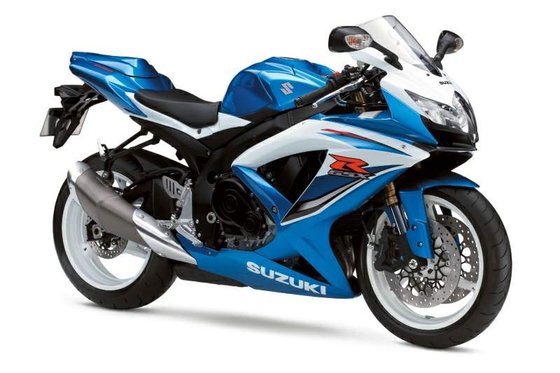
The 2008 redesign marked a visual departure from its predecessors. Suzuki’s engineers prioritized aerodynamic efficiency with a wider fairing at the handlebars to reduce turbulence and a trio of horizontally stacked halogen headlights. While the central projector beam handled low-beam duties, the outer lights activated for high beams, creating a 20% wider illumination area—a subtle but meaningful upgrade for night riders. The ram-air intakes flanking the headlights weren’t just cosmetic; they fed the 599cc inline-four with minimal drag, contributing to its 253 km/h (157 mph) top speed.
The fuel tank grew to 17 liters (4.5 US gallons), a welcome change for riders tackling longer stretches between stops. At 810 mm (31.9 inches), the seat height struck a balance between aggressive ergonomics and accessibility, though taller riders might find the narrow seat pushes them closer to the clip-ons. The tail section’s angular design wasn’t just for show—it housed an LED taillight that’s still sleek by modern standards.
Engine & Performance
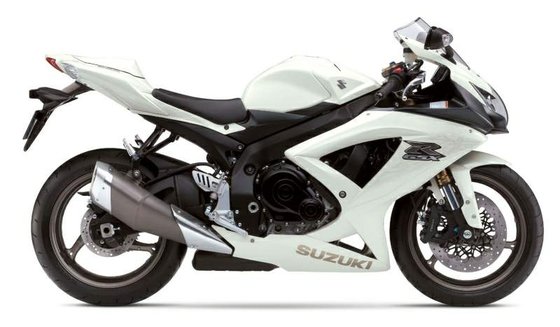
At its heart lies a 599cc liquid-cooled inline-four, producing 125 hp at 13,500 rpm (with RAM air) and 67.7 Nm (49.9 ft-lb) of torque at 11,500 rpm. The engine’s party trick? A 12.8:1 compression ratio—unchanged from 2008–2010—paired with Suzuki’s Dual Throttle Valve (SDTV) fuel injection. Dual injectors per cylinder and iridium spark plugs ensured crisp throttle response, though the real magic lives above 9,000 rpm. Below that, the GSX-R feels polite, almost docile. But twist the throttle past the midrange, and the engine transforms into a snarling, 16,000-rpm beast.
The S-DMS (Suzuki Drive Mode Selector) offered three throttle maps:
- Mode A: Full aggression, ideal for dry track days.
- Mode B: Smoothed power delivery for wet roads.
- Mode C: Reduced output for slippery conditions.
While not as granular as modern ride-by-wire systems, the S-DMS was ahead of its time for a 600cc class bike. The cable-operated slipper clutch deserves praise too—it forgave aggressive downshifts, keeping the rear wheel planted during hard braking.
Handling & Suspension
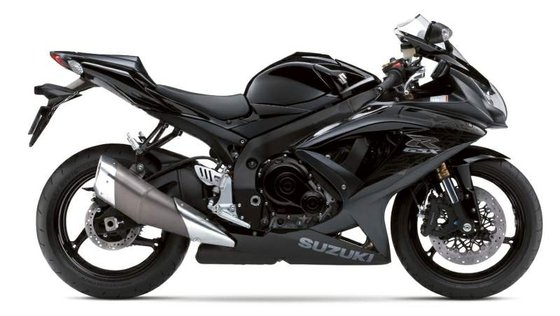
The aluminum twin-spar frame and braced swingarm delivered a 55.1-inch (1,400 mm) wheelbase, striking a balance between agility and stability. Showa’s 41mm inverted forks (fully adjustable for rebound, compression, and preload) and a rear shock with high/low-speed compression damping provided a chassis that felt planted on smooth tarmac yet compliant enough for bumpy backroads.
During spirited riding, the GSX-R’s 163 kg (359 lbs) dry weight made flicking between corners effortless. However, the front end could feel vague when pushed beyond its limits—a trait common in pre-2010 supersports. Upgrading to modern tires (the original Bridgestone Battlax BT-016s were competent but dated) transforms the bike’s cornering confidence.
Electronics & Features
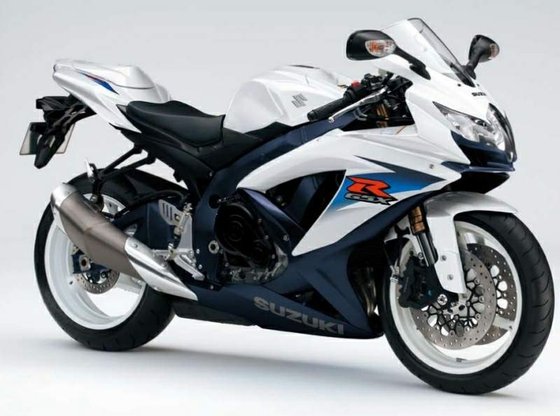
The GSX-R’s electronics were minimalist by today’s standards but effective. The electronically controlled steering damper adjusted damping based on speed—a subtle feature that instilled confidence during high-speed straights. The analog tachometer paired with an LCD screen (showing gear position, fuel reserve, and tripmeters) was intuitive, though the lack of a fuel gauge irked touring-minded riders.
Notably, the 2008–2010 models introduced Suzuki’s Exhaust Tuning (SET) valve in the mid-pipe. This butterfly valve optimized backpressure, boosting low-end torque—a clever mechanical solution to a problem many rivals addressed with electronics.
Competition
The 2008–2010 GSX-R 600 faced fierce rivals. Here’s how it stacked up:
Yamaha YZF-R6
- Strengths: Sharper chassis, higher-revving engine (17,200 rpm redline).
- Weaknesses: Harsher low-end power delivery, less comfortable ergonomics.
- Verdict: The R6 was a track specialist, but the GSX-R’s midrange made it more versatile for street use.
Honda CBR600RR
- Strengths: Buttery-smooth inline-four, refined electronics.
- Weaknesses: Softer suspension setup, less aggressive styling.
- Verdict: The Honda prioritized comfort, while the Suzuki appealed to riders craving raw feedback.
Kawasaki Ninja ZX-6R
- Strengths: Optional ABS (from 2009), torquier engine.
- Weaknesses: Heavier feel, dated analog dash.
- Verdict: The ZX-6R was a better all-rounder, but the GSX-R dominated in outright agility.
GSX-R’s Edge: Adjustable footpegs (14mm vertical/horizontal range) and three throttle maps gave it a customization edge. However, its dated suspension components (non-cartridge forks) lagged behind the R6’s fully adjustable setup.
Maintenance
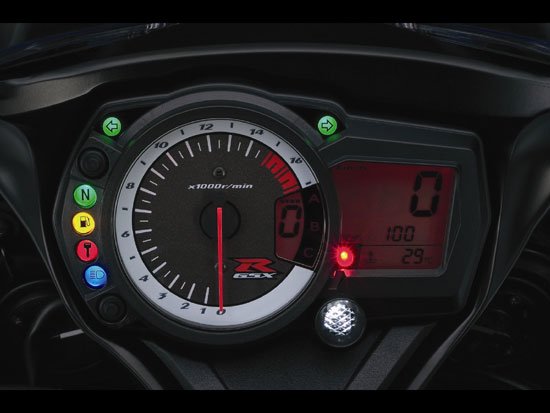
Ownership costs are where the GSX-R shines. Here’s what to prioritize:
- Oil Changes: Use 10W40 synthetic oil every 5,000 km (3,100 miles). The wet sump system simplifies DIY changes—no external oil tanks to fuss with.
- Valve Inspections: Check every 24,000 km (15,000 miles). Shim-under-bucket design requires patience but ensures long-term durability.
- Chain & Sprockets: The #525 chain demands regular lubrication. Upgrade to an X-ring chain for longevity.
- Brakes: Tokico calipers are durable but benefit from stainless steel lines. Swap pads to sintered compounds for track use.
- Cooling System: Flush coolant every 2 years. The 2.65-liter system runs efficiently but watch for leaks near the SET valve.
MOTOPARTS.store Recommendations:
- Lightweight aftermarket exhausts (e.g., Yoshimura TRC) to shed weight and unlock the engine’s top-end.
- Adjustable rearsets for improved cornering clearance.
- Upgrade to braided brake lines for firmer lever feel.
Conclusion
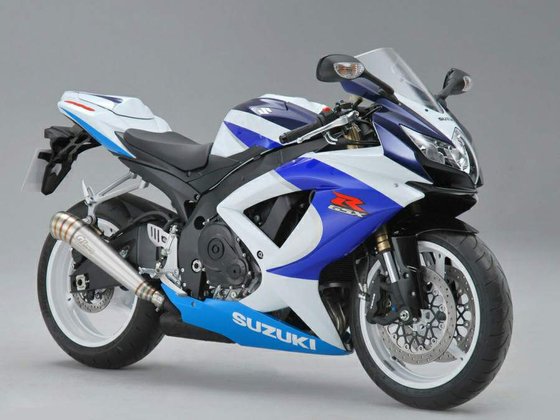
The 2008–2010 Suzuki GSX-R 600 isn’t just a relic of the pre-TFT dash era—it’s a testament to analog engineering done right. Its engine thrills in the upper revs, its chassis forgives novice mistakes, and its minimalist electronics keep the focus on riding purity. While newer 600s have eclipsed it in tech, the Gixxer’s blend of accessibility and track-ready DNA ensures it remains a compelling choice for riders who value mechanical connection over digital intervention. Whether you’re hunting apexes or reliving Suzuki’s golden era, this GSX-R generation deserves a spot in your garage—and a few choice upgrades from MOTOPARTS.store.




Specifications sheet
| Engine | |
|---|---|
| Stroke: | Four-stroke |
| Max power: | 93 kW | 125.0 hp |
| Max torque: | 68 Nm |
| Fuel system: | EFI, Four 40mm throttle bodies, S-DMS engine management |
| Lubrication: | Wet sump |
| Max power @: | 13500 rpm |
| Spark plugs: | NGK CR9E |
| Displacement: | 599 ccm |
| Max torque @: | 11500 rpm |
| Configuration: | Inline |
| Cooling system: | Liquid cooled |
| Spark plug gap: | 0.9 |
| Compression ratio: | 12.8:1 |
| Number of cylinders: | 4 |
| Dimensions | |
|---|---|
| Wheelbase: | 1400 mm (55.1 in) |
| Dry weight: | 163 |
| Wet weight: | 193 |
| Seat height: | 810 mm (31.9 in) |
| Overall width: | 715 mm (28.1 in) |
| Overall height: | 1125 mm (44.3 in) |
| Overall length: | 2040 mm (80.3 in) |
| Ground clearance: | 130 mm (5.1 in) |
| Fuel tank capacity: | 17 L (4.5 US gal) |
| Drivetrain | |
|---|---|
| Final drive: | chain |
| Gear ratios: | 1st 2.56, 2nd 2.05, 3rd 1.71, 4th 1.50, 5th 1.35, 6th 1.21:1 |
| Chain length: | 114 |
| Transmission: | 6-speed, constant mesh |
| Rear sprocket: | 43 |
| Front sprocket: | 16 |
| Electronics | |
|---|---|
| Lighting: | Triple projector headlights, LED tail light |
| Rider modes: | 3-mode S-DMS (A/B/C) |
| Steering damper: | Electronically controlled |
| Maintenance | |
|---|---|
| Engine oil: | 10W40 |
| Brake fluid: | DOT 4 |
| Coolant capacity: | 2.65 |
| Forks oil capacity: | 0.82 |
| Engine oil capacity: | 2.5 |
| Chain maintenance interval: | Every 1000 km (adjustment), 5000 km (lubrication) |
| Engine oil change interval: | Every 5000 km or 2 years |
| Valve clearance (intake, cold): | 0.08–0.18 mm |
| Valve clearance check interval: | 24,000 km / 15,000 mi |
| Valve clearance (exhaust, cold): | 0.18–0.28 mm |
| Recommended tire pressure (rear): | 2.5 bar (36 psi) solo, 2.9 bar (42 psi) with passenger |
| Recommended tire pressure (front): | 2.5 bar (36 psi) |
| Chassis and Suspension | |
|---|---|
| Rake: | 23.25° |
| Frame: | Aluminum twin-spar extrusion |
| Trail: | 93 mm (3.7 in) |
| Rear tire: | 180/55 z-17 |
| Front tire: | 120/70 z-17 |
| Rear brakes: | Single 220mm disc, Tokico 2-piston caliper |
| Front brakes: | Dual 310mm discs, Tokico 4-piston radial calipers |
| Rear suspension: | Showa monoshock, fully adjustable (rebound/compression/preload) |
| Front suspension: | Inverted 41mm Showa forks, fully adjustable (rebound/compression/preload) |
| Rear wheel travel: | 130 mm (5.1 in) |
| Front wheel travel: | 125 mm (4.9 in) |



